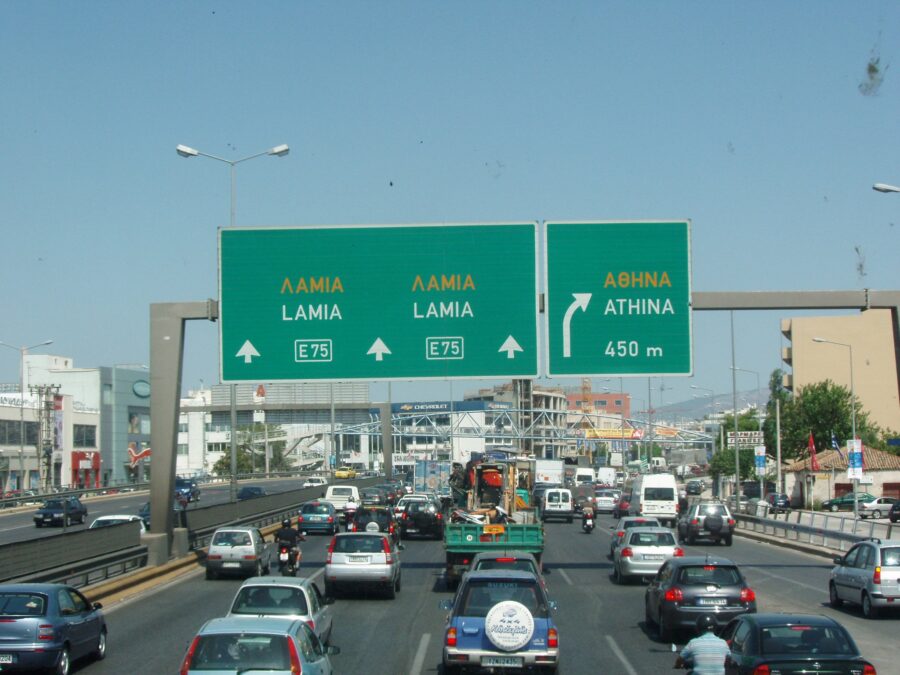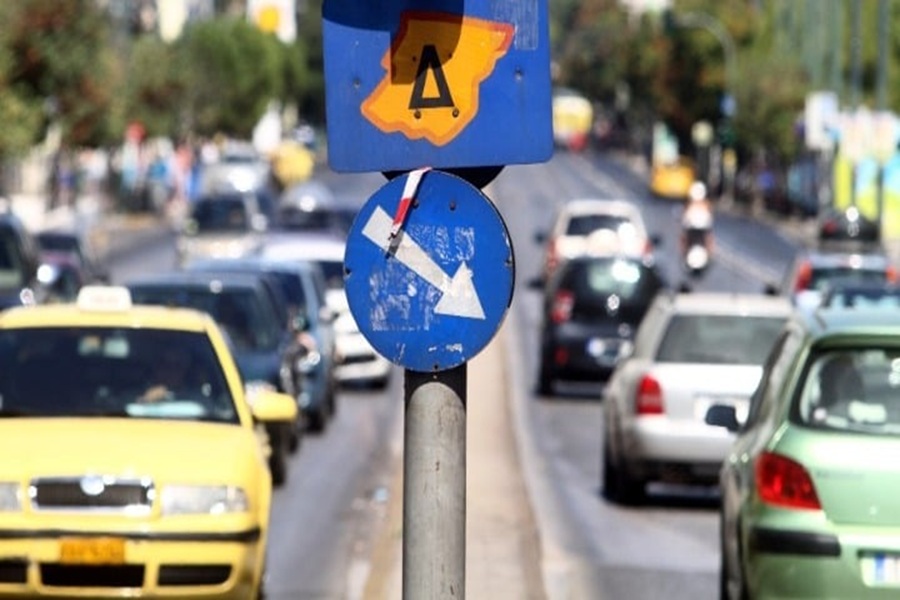
Do You Need a Car in Athens? 7 Surprising Reasons to Ditch the Wheels for Your Trip
Athens can honestly feel like a maze, especially if it’s your first time here. Maybe you’re thinking about grabbing a rental car to see it all—though, if you ask most travelers, a car in Athens just ends up being more hassle than help.
The city’s full of winding streets, relentless traffic, and parking that’ll test your patience. I’ve walked those streets myself, and I’d pick public transportation or just wandering on foot over driving any day. Skipping the car let me actually enjoy Athens instead of stressing about where to leave it.
Contents
- Key Takeaways
- Is a Car Necessary in Athens?
- Advantages of Having a Car in Athens
- Disadvantages of Driving in the City
- When Not to Rent a Car
- Public Transportation Options
- Athens Metro
- City Buses and Trolleys
- Trams and Suburban Rail
- Exploring Athens Without a Car
- Walking and Cycling
- Taxi Apps and Rideshares
- When Renting a Car in Athens Makes Sense
- Day Trips and Excursions
- Visiting Remote Attractions
- Car Rental Requirements in Greece
- Minimum Age and Driver’s License
- International Driving Permit
- Parking Challenges and Restrictions
- Finding Legal Parking in Athens
- Residential and Paid Parking Zones
- Costs of Driving and Renting a Car
- Rental Rates and Insurance
- Fuel Prices and Tolls
- Local Driving Rules and Safety Tips
- Road Signs and Navigation
- Traffic Zones and Restrictions
- Frequently Asked Questions
- What are the most convenient modes of transportation in Athens for tourists?
- Are there any benefits to renting a car while staying in central Athens?
- How does the public transport system in Athens compare to having a personal vehicle?
- Can visitors easily explore Athens’ attractions without a car?
- What should travelers consider before deciding to rent a car in Athens?
- What options are available for tourists traveling from Athens airport to the city center?
- More Travel Guides
Key Takeaways
- You probably don’t need a car to get around Athens.
- Walking and public transport are usually the easier choices.
- Driving here means dealing with traffic and scarce parking.
Is a Car Necessary in Athens?

You can explore most of Athens without a car. The main sights sit close together, and public transport works pretty well.
Parking and traffic just add stress, though I’ll admit, sometimes a car has its perks if you’ve got special plans.
Advantages of Having a Car in Athens
Sometimes, having your own car in Athens sounds tempting. If you want to chase the sunrise or hit the road late at night, you’re not at the mercy of anyone’s schedule.
You can haul all your stuff—suitcases, snacks, random shopping bags—without breaking a sweat. I remember dragging bags on the tram once, and it wasn’t my finest moment. With a car, you just toss it all in the trunk.
Air conditioning on a blazing hot day? That’s a little luxury you don’t appreciate until you’re melting on the sidewalk. And your playlist? All yours.
If you’re planning side trips—Cape Sounion, Lake Marathon, wherever—a car gets you there faster. Buses go, but not always when you want. Got kids or older folks with you? Less walking, less complaining.
Disadvantages of Driving in the City
To be honest, driving in central Athens is just not fun. Traffic jams can turn a quick trip into a crawl, and Athenian drivers aren’t exactly known for their chill. I once circled for forty minutes just to find a parking spot near the Acropolis.
Most big attractions—Plaka, Acropolis Museum, Monastiraki—sit in pedestrian zones or are just plain awkward to reach by car. You’ll park far away and walk anyway.
Parking rules? Sometimes they’re a mystery, and getting ticketed or towed is a real risk. Gas costs a lot, but public buses and the Metro are cheap and reliable. Taxis are everywhere. Honestly, you might save yourself some headaches by skipping the car altogether.
When Not to Rent a Car
If you’re sticking to Athens, don’t bother with a car. Most sights are walkable or just a quick metro ride away. The airport and port both hook up nicely to public transit.
Life’s just simpler when you’re popping into museums, markets, or settling in for a long dinner in Psiri or Exarchia. Those narrow, winding streets do not make driving or parking fun.
If your hotel’s central and you’re not planning to leave the city, just use public transport, grab a taxi, or rent a bike. Your sanity—and your wallet—will thank you.
Public Transportation Options
Honestly, you really don’t need a car for most of Athens. The city’s public transport is easy to figure out, especially if you’ve tackled other big cities before.
Everything connects, and you’re rarely far from a stop or station.
Athens Metro

You’ll probably use the Athens Metro a lot. It’s color-coded and straightforward, even if your Greek is rusty. Most signs have English, which helps a ton.
Three main lines run through the city and out to the suburbs. The metro drops you right near the big sights—Acropolis, Monastiraki, Syntagma Square. Trains come every few minutes during the day and run from early morning until just after midnight (a bit later on weekends).
If you’ve got luggage, rush hour can get crowded, but it’s doable. You tap your ticket in and out, and standard tickets cover metro, bus, trolley, and tram rides for 90 minutes—super convenient if you need to transfer.
City Buses and Trolleys

If you’re heading somewhere the metro doesn’t reach, buses and trolleys come to the rescue. I’ve used them for neighborhoods just out of walking range.
The network stretches across Athens and deep into the suburbs. Buses get crowded at peak times, especially on Mondays or after work. Schedules? Sometimes they’re more like suggestions than rules, so patience is key.
You’ll see more of the “real” Athens this way, sitting with locals and watching the city go by. Most stops have electronic boards showing when the next bus is coming.
If you want a tip, grab the OASA Telematics app—it’s way more reliable than paper schedules. Just remember to validate your ticket when you get on.
Trams and Suburban Rail

The trams are perfect if you’re heading for the water. They run from the city center down to the coast. I usually take a tram to the beaches in Glyfada or Voula. They’re slower than the metro, but you get seaside views, which is a nice tradeoff in summer.
The suburban rail (Proastiakos) is your friend if you need to reach the airport, Piraeus port, or even places like Corinth. The ride is comfy, and you’ll usually find space for your bags. Trains don’t run as often as the metro, so check the schedule ahead or you might be waiting longer than you’d like.
On weekends and holidays, service can drop off, so plan ahead. You can use the same metro ticket for most tram trips, but rides to the airport usually cost extra.
Here’s a quick table for reference:
| Mode | Main Uses | Ticket Needed |
|---|---|---|
| Metro | Sightseeing, central city | Standard or airport |
| Bus/Trolley | Neighborhood access | Standard |
| Tram | Coastal, beach trips | Standard |
| Suburban Rail | Airport, port, outlying | Airport/Special fare |
Exploring Athens Without a Car
Athens’ heart is compact and just made for exploring on foot. Lively plazas, ancient streets, and modern shops all mix together, and you’ll get around easily—no car keys needed.
Walking and Cycling

If you like walking, Athens is a treat. The Acropolis, Plaka, and Monastiraki are all close, so you don’t waste time commuting. The old center is pedestrian-friendly with broad walkways, café-lined streets, and quirky shops at every turn.
Anafiotika feels like a hidden island in the city—bring your camera, trust me.
Cycling here isn’t as wild as it sounds, though Athens traffic can be a little intimidating. The city’s added more cycle paths, especially in the historic center and along the coast. Bike rentals are cheap, and e-bikes take the sting out of those sneaky hills.
Just keep an eye out for scooters—they do their own thing.
Quick tips for walking or cycling:
- Wear comfy shoes (the cobblestones are no joke).
- Bring water, especially after 10am—it gets hot fast.
- Watch out for drivers who treat yellow lights as a suggestion, not a rule.
If you’re in a hurry or just not in the mood to walk, taxi apps have made Athens way easier. Uber’s here, but it usually connects you to licensed local taxis. Beat (formerly Taxibeat) is the local favorite.
You pop in your pickup and destination, and a yellow cab shows up—sometimes in two minutes flat. No more haggling fares in broken Greek. Rides are cheap compared to a lot of Europe, and you can pay through the app or with cash.
I used to worry about drivers taking the “scenic route,” but GPS has mostly solved that. When there’s a protest or big event, cabs might be tough to find. Late at night, the apps help you avoid the chaos of flagging random taxis.
I’ve grabbed rides at 2am after a night in Gazi and never felt unsafe. Just double check the license plate matches your app—always a good idea.
When Renting a Car in Athens Makes Sense
You might not need a car in Athens, but sometimes renting one just makes sense. Public transport doesn’t get you everywhere, or not easily.
Day Trips and Excursions

If you’re planning a day trip out of Athens, a rental car gives you flexibility. Want to see Delphi, Nafplio, or Mycenae? Sure, public transport can get you there, but expect waiting, transfers, and maybe missed stops.
With your own wheels, you leave when you want, stop in small villages, detour to a quiet beach, or pull over for a taverna lunch. That freedom’s hard to beat.
Buses and trains can eat up your day. You could book a guided day trip if you’re not into driving, but with a car, you’re in control. Parking outside Athens is usually easy and cheap, so it’s less stressful than parking in the city.
Visiting Remote Attractions
For those out-of-the-way places, a rental car is almost a must. Some ruins, natural spots, or mountain villages just aren’t on any bus or train route.
If you want to visit a quiet monastery up a hill or a winery you heard about, a car gives you the freedom to explore. Booking online is simple, and you can pick up your car at the Athens airport or in the city.
You’ll find local attractions online, but sometimes only a car gets you into those tucked-away corners. Sometimes it’s just nice to wander, see what you find, and forget the schedule for a while.
Car Rental Requirements in Greece

Renting a car in Greece means you’ll need to meet a few rules before you hit the road. Age, license, and some paperwork—nothing too wild, but worth checking before you book.
Minimum Age and Driver’s License
You’ll need to be at least 21 if you want to rent most standard cars in Greece. Some rental companies push the minimum age up to 23 or even 25 for fancier models or larger vehicles.
Make sure you’ve held your driver’s license for at least a year—rental companies actually check for that, and they won’t just take your word for it.
If you’re under 25, brace yourself for a possible “young driver” fee. It’s not fun, but it’s pretty much the norm across Europe.
Here’s a tip: always double-check the small print when you book your car. When you use a big global platform or search vacation rentals, scan the terms so you don’t get hit with surprises at pickup.
You won’t need a Greek tax number (AFM) just to rent a car as a tourist. That’s more of a local headache for major transactions—your passport and license should do the trick at the counter.
International Driving Permit
If you have a license from outside the EU, you might need an International Driving Permit (IDP)—but honestly, rental agencies seem all over the place about this. Some won’t care, but others will refuse to hand over the keys without it.
Personally, I always grab an IDP for peace of mind. It’s cheap and saves you from the headache of arguing at the desk.
If you’re from the US, here’s the good news: most of the time, a valid US license is fine, and you won’t get asked for an IDP these days. Still, things change quickly, or depend on the agent’s mood, so better safe than sorry.
You don’t need a Greek tax number for an IDP—just bring your license, the permit, and your passport. That combo should cover you at any rental office in Athens or pretty much anywhere in Greece.
Parking Challenges and Restrictions
Parking in Athens will test your patience and maybe make you question why you brought a car in the first place. If you’ve ever circled a block looking for a spot, imagine that—but the streets are narrower and the rules are stricter.
It’s not just about finding a space. You have to watch for rules, signs, and those color-coded curbs, so you don’t end up with a fine or, worse, see your car towed.
Finding Legal Parking in Athens
Honestly, finding legal street parking in central Athens feels like hunting for treasure—except the city officials are the pirates, and they’re armed with tickets. Most locals seem to have a sixth sense for tiny open spaces that visitors just can’t spot.
You’ll see streets plastered with signs and colored lines. Blue lines mean paid parking for non-residents, usually from morning until late afternoon.
Watch for yellow curbs—they’re off-limits, often for taxis or buses. White lines usually mean it’s free to park, but only if there aren’t other restrictions hiding nearby.
I’ve seen people squeeze into spots that barely exist—doors pressed up against scooters or lampposts. Be careful, because parking fines are common. I got ticketed once for missing a tiny sign.
Fines start around €40 and can go way higher, especially if you block a driveway or sidewalk.
Residential and Paid Parking Zones
If you’re not a resident, some neighborhoods make street parking nearly impossible. The city splits up parking with a color-coded system.
Blue zones: Paid for everyone except permit holders.
White zones: Sometimes free, but rules change, so double-check.
Yellow zones: For city vehicles or official use—don’t even try.
You’ll spot meter machines on most big streets. Most take coins or cards, and prices climb the closer you get to the city center.
Some places use an app, but it’s buggy—I’ve lost a few euros to that! If you want less stress, check out private garages or commercial lots. They’re often tucked away underground or behind big hotels.
These garages might seem pricey, but they’re usually secure, monitored, and honestly, they may save you a ton of time.
If you’re parking for more than a couple hours, garages are often your best bet. You can leave your car and enjoy the city on foot or hop on the metro.
Most people underestimate how walkable Athens is, especially in the historical center.
Costs of Driving and Renting a Car

Driving in Athens brings more expenses than just the car rental itself. Between daily rental fees, insurance, gas prices, and city tolls, costs can add up fast if you’re not paying attention.
Rental Rates and Insurance
If you’re looking for car rental options in Athens, prices really swing with the season. During mid-season, a small car might run you €20-€50 per day. In summer, expect €40-€70.
That doesn’t include extras like an automatic transmission (usually costs more) or GPS.
Insurance isn’t really optional. Basic coverage might come with your rental, but you probably want extra coverage for peace of mind—especially with Athens’s busy roads.
Damage waivers and theft protection cost more, but you’ll be glad you have them if anything happens.
For the best deals, I’d compare rates early and book through travel sites. I’ve saved a lot that way, and it’s nice if you want to cancel or change plans last minute.
Fuel Prices and Tolls
Gas in Athens isn’t cheap. You might pay about €1.80-€2.00 per liter, depending on the neighborhood or even the street—yeah, prices can shift within one block.
That adds up fast if you’re planning to drive much.
Don’t forget about motorway tolls if you leave the city. Most highways have toll stations, and costs depend on distance—a quick trip can be €2-€4 each way.
It seems like pocket change at first, but if you’re bouncing between towns every day, you’ll feel it.
If you want to save on fuel or pick the best car, compare options when booking a car. Look for good mileage and factor in parking fees, which can sneak up on you in Athens’s busy center.
One little thing I always do: keep coins handy for tolls. Half the time, the machine won’t take cards, especially at smaller stations, and there’s nothing more awkward than holding up traffic while you dig for a euro!
Local Driving Rules and Safety Tips
Driving in Athens is just different from other cities you might’ve visited. You’ll need to pick up some local habits, understand road markings, and watch for restrictions that aren’t always obvious to tourists.

Greek road signs can get confusing if you’re new in town. Most are in both Greek and English, but sometimes smaller side street signs are only in Greek or just missing.
I’ve gotten lost more than once because the GPS didn’t catch a tiny backstreet.
A few tips: red circles mean prohibitions—like “no entry” or “no parking.” Blue signs usually give directions or required actions.
Pay close attention to arrows, because one-way streets are everywhere in central Athens. If you see a sign you can’t read, don’t just wing it—pull over safely and check your map or a translation app.
It’s tempting to just follow the crowd, but locals know tricks and shortcuts that can land you in a restricted area or a ticket zone fast.
Street parking uses color codes right on the curb. Blue means pay-and-display (for everyone), white is for residents, and yellow? Just avoid those—they’re for taxis or deliveries.
Parking tickets are very real, and they add up.
Traffic Zones and Restrictions

Athens has zones with driving restrictions. The big one is the “Daktylios” (the “ring”), which keeps certain cars out of the city center on weekdays based on license plate numbers.
Signs mark the entry points, but the rules change often, and rental counters rarely explain them. I once spent a whole morning figuring out why everyone turned away from a certain street—my rental was banned that day.
Other areas, especially tourist spots like Plaka, are pedestrian-only. Motorcycles might sneak through, but if you try it in a car, fines can be steep.
Sometimes there are cops, sometimes not, but don’t risk it. It really isn’t worth ruining your trip just to get a little closer to the Parthenon.
If a street looks mysteriously empty during rush hour, double-check—it’s probably restricted at that time.
Pro Tip: Always ask your hotel or a trustworthy local if there are new rules before you set off. Rules change every so often, and there’s not always much warning.
Frequently Asked Questions
Getting around Athens can feel a bit intimidating at first, especially if you’re used to driving everywhere back home. But the mix of public transit, walkable neighborhoods, and a few clever travel hacks usually means you won’t really need a car in the city center.
What are the most convenient modes of transportation in Athens for tourists?
You’ve got plenty of options. The Athens Metro is clean, runs pretty often, and gets you close to the major sights.
Taxis aren’t too pricey compared to a lot of other capitals.
Walking is honestly one of my favorite ways to explore, because those winding little streets around Plaka are just a joy on foot.
If you’re feeling adventurous or the weather’s good, the tram to the coast is a fun little ride.
Are there any benefits to renting a car while staying in central Athens?
I won’t sugarcoat it—renting a car in downtown Athens is often more trouble than it’s worth. Parking is a pain, traffic jams pop up out of nowhere, and local driving etiquette…well, it’s got personality.
But if you’re planning day trips outside the city (like Delphi or Sounion), a car does make life easier.
If your plans are strictly “Acropolis and souvlaki”? I’d skip the car.
How does the public transport system in Athens compare to having a personal vehicle?
Honestly, the Metro gets you just about anywhere you want to be as a visitor, and you won’t have to dodge scooters or squeeze into parking spots the size of a shoebox.
Buses can be a bit hit or miss, but for the most part, public transit is reliable.
If you hate crowds or waiting, you might feel boxed in during rush hour. Still, I think you save time and stress by skipping the car.
Can visitors easily explore Athens’ attractions without a car?
Absolutely. Most of Athens’ top sights are within walking distance of each other.
You can stroll from the Acropolis to Monastiraki and Plaka in a single afternoon.
If your feet need a break, just hop on the Metro. Trust me, you won’t miss out by skipping the car.
Honestly, places like the narrow alleys of Anafiotika just aren’t made for anything with wheels.
What should travelers consider before deciding to rent a car in Athens?
Think about where you really want to go. If your plan is ancient ruins, museums, and snapping photos of cats in tiny alleyways, a car is usually more hassle than it’s worth.
Keep in mind the risk of car break-ins too (especially if you leave luggage in plain sight).
If you do rent, check the parking situation at your hotel, and maybe brush up on your parallel parking before you fly out!
What options are available for tourists traveling from Athens airport to the city center?
If you’re landing at Athens airport, you’ve got a few solid ways to get downtown. Metro line 3 heads right into the city center.
There’s also an airport bus that runs all day and night to Syntagma Square. Taxis wait just outside arrivals, and they charge a fixed fare to downtown—so at least you know what you’re paying.
Honestly, I usually just take the Metro. It’s easy, there’s no traffic stress, and you get to watch all kinds of people come and go.



